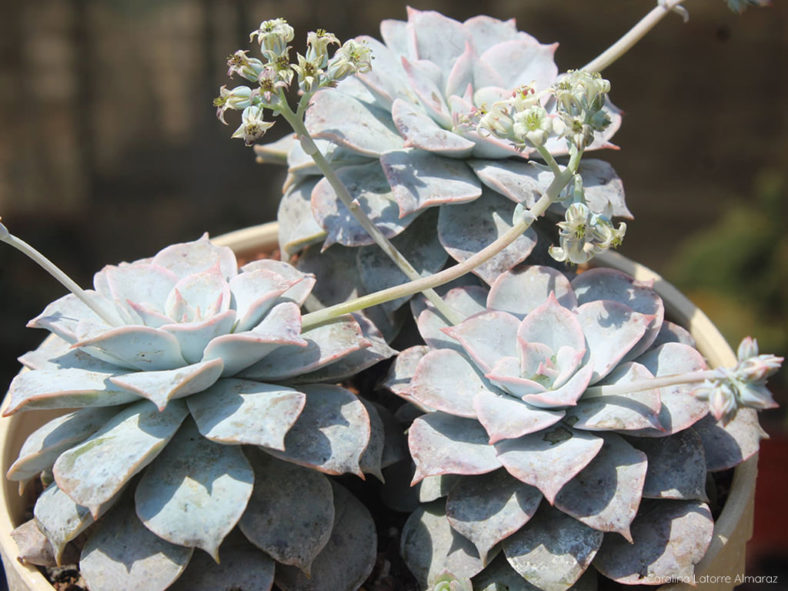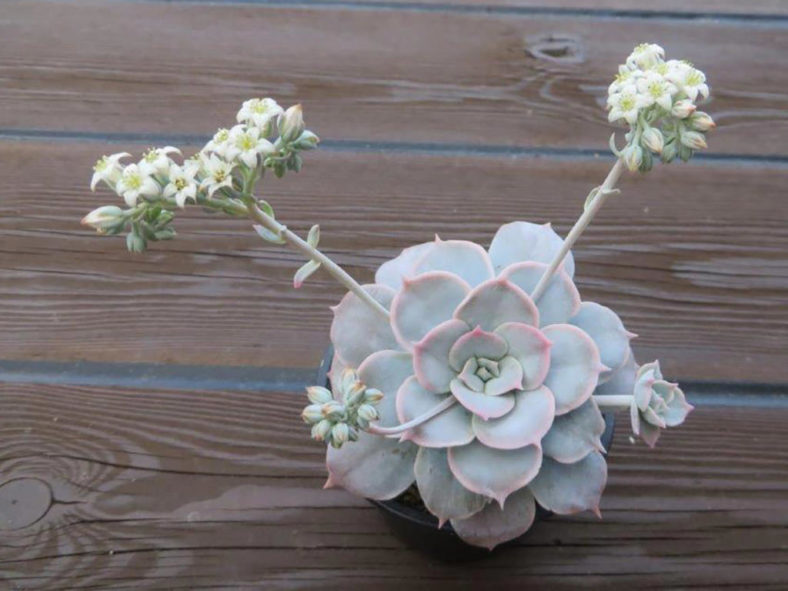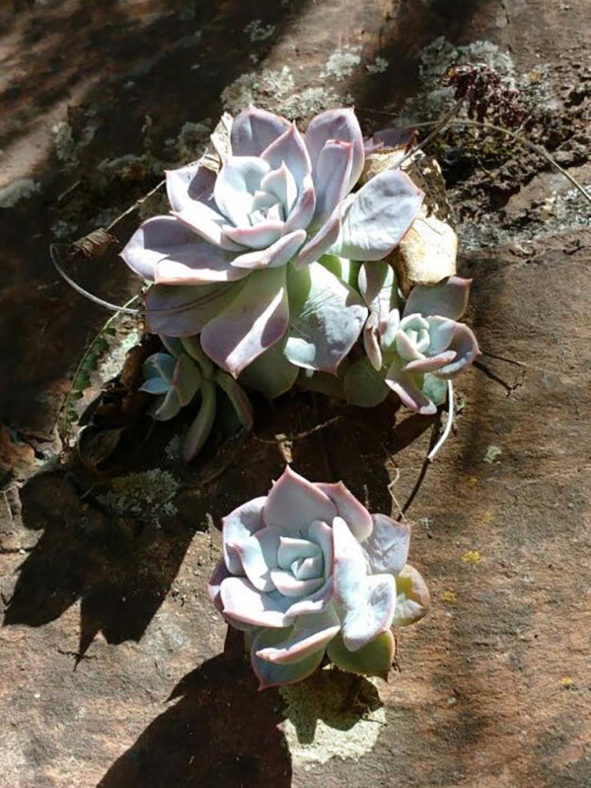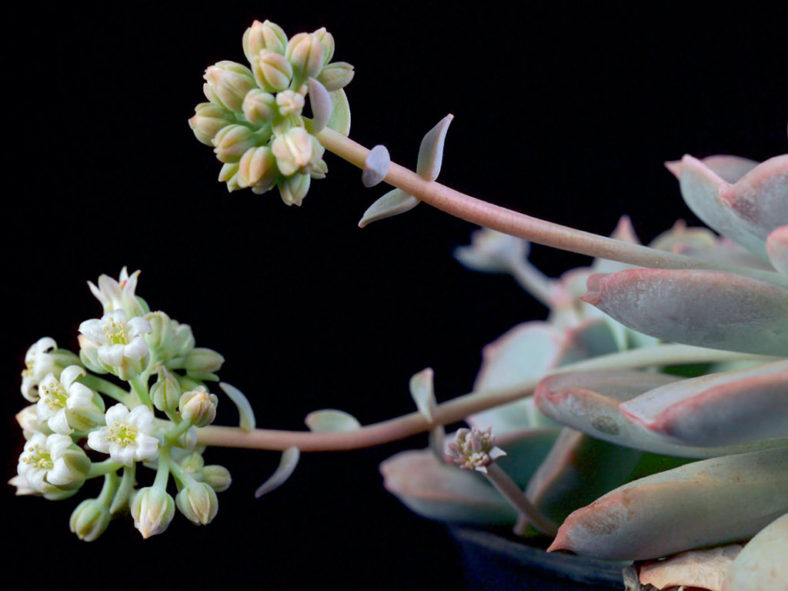Scientific Name
Sedum sinforosanum J.Reyes, Etter & Kristen
Scientific Classification
Family: Crassulaceae
Subfamily: Sempervivoideae
Tribe: Sedeae
Genus: Sedum
Etymology
The specific epithet "sinforosanum (sin-for-MOH-sa-num)" refers to the Sinforosa Canyon, which is the native range of this species.
Origin
Sedum sinforosanum is endemic to Sinforosa Canyon, part of the Copper Canyon system in the State of Chihuahua in northwestern Mexico. It is found at the suspension bridge in pine and oak forest and near the waterfall in a tropical deciduous forest.
Description
Sedum sinforosanum is a small succulent that forms rosettes of fleshy, grey-green to rose-colored leaves with margins markedly pink. It produces offsets with short stems, forming a dense clump over time. The rosettes can reach up to 3.6 inches (9 cm) in diameter, while the stems can grow up to 3.2 inches (8 cm) long and about 0.2 inches (0.5 cm) in diameter. The leaves are obovate, ending in a sharp point, measuring up to 1.4 inches (3.5 cm) long and 0.8 inches (2 cm) wide.
The star-shaped flowers are white with a slight pink tinge and reddish apex of the petals. They appear in clusters on slender, 2 to 4 per rosette stalks that can grow up to 3.6 inches (9 cm) long in spring and summer.
Sedum sinforosanum is related to Sedum suaveolens.

How to Grow and Care for Sedum sinforosanum
Light: This succulent grows best in locations where it will enjoy the full sun for at least six hours daily. It will tolerate partial shade but will not thrive in deep shade. Keep your indoor plant in a sunny window or under artificial lights.
Soil: S. sinforosanum does not like to sit in waterlogged soil, so drainage is essential to prevent root rot. Choose a well-draining soil mix.
Temperature: This plant is tolerant of heat and freezing temperatures. S. sinforosanum can withstand temperatures as low as 25 °F (-3.9 °C). USDA Plant Hardiness Zones 9b to 11b, 25 to 50 °F (-3.9 to 10 °C).
Watering: From spring through fall, water thoroughly and wait for the soil to dry out before watering again. In winter, water your plant just enough to keep it from shriveling. Avoid wetting the leaves, stems, and flowers when watering.
Fertilizing: Feed with a balanced organic fertilizer in spring. Feeding is unnecessary as long as the plant is divided annually and provided with fresh soil.
Repotting: Repot your plant when it outgrows its current pot by moving it out to a larger container to hold the plant better. Spring is the best time to repot S. sinforosanum. Make sure the soil is dry before you begin repotting.
Propagation: Once you have one S. sinforosanum, it is easy to make more by taking stem cuttings and dividing the plant. It is also easy to grow from seed. Take cuttings in spring when the plant is in active growth. Once it has finished flowering, it is the right time for division. Spring or summer is the best time to sow the seeds.
Learn more at How to Grow and Care for Sedum.
Toxicity of Sedum sinforosanum
S. sinforosanum is not listed as toxic for people but can be mildly toxic to pets and children.
Links
- Back to genus Sedum
- Succupedia: Browse succulents by Scientific Name, Common Name, Genus, Family, USDA Hardiness Zone, Origin, or cacti by Genus
Photo Gallery
Click on a photo to see a larger version.


